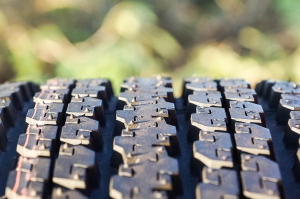 Preventative maintenance is key to getting the most life out of a commercial motor vehicle (CMV). While some drivers and fleets put off maintenance to save a few dollars in the short term, the long-term costs of delaying will add up faster. For example, engine oil can last for up to 50,000 miles in a heavy-duty vehicle, but this does not mean the driver should wait until the 50,000 mark to change it.
Preventative maintenance is key to getting the most life out of a commercial motor vehicle (CMV). While some drivers and fleets put off maintenance to save a few dollars in the short term, the long-term costs of delaying will add up faster. For example, engine oil can last for up to 50,000 miles in a heavy-duty vehicle, but this does not mean the driver should wait until the 50,000 mark to change it.
To put it another way, drivers do not time their remaining gas down to the mile before refueling. They would run the risk of not making it to the station in time before turning up empty. When pushing a vehicle to its limits, a driver is forcing it to operate in less than optimum conditions. This puts stress on the vehicle and wears it down faster than if the driver performed frequent, regular maintenance.
Unscheduled maintenance will always cost more than scheduled maintenance. This is because it is usually the result of an emergency or a failure of some kind from pushing the vehicle too far. It also disrupts the flow of work and can interrupt hauling schedules. The following are several easy preventative maintenance tips that can help prolong a CMV’s life.
- Check tire pressure. Underinflated tires get poorer gas mileage and can wear unevenly. This can increase operating costs over time, and it can affect a driver’s BASIC score under the Compliance, Safety, Accountability (CSA) program.
- Check tire tread. While the Department of Transportation (DOT) dictates drive and trailer tires need to be at least 2/32nds of an inch and steer tires need to be 4/32nds, it is not wise to wait until the tread wears that thin. Drivers may be able to eke out another 10-15,000 miles from their tires, but they may also cross the bare minimum threshold and fail a roadside inspection or end up blowing out a tire.
- Check and clean batteries and connectors. Fleets and owner-operators should invest in battery testers. They only cost about $100 and allow drivers to test their batteries at frequent intervals. Checking a battery once per year or season is not often enough. Anytime a driver performs preventative maintenance, he or she should clean and check the battery. If the battery is on its last legs, the driver may find him or herself with a non-operation vehicle without warning.
- Invest in telematics. Drivers and fleets no longer have to keep paper records of their maintenance needs. Telematics technology can alert drivers of emerging maintenance issues and allow fleets to address them before they become a problem.
Frequent preventative maintenance is crucial to extending the life of fleet vehicles. Telematics technology can help simplify the process and keep drivers aware of their vehicle’s needs. To learn more about preventative maintenance technology, contact the experts at DriverCheck.